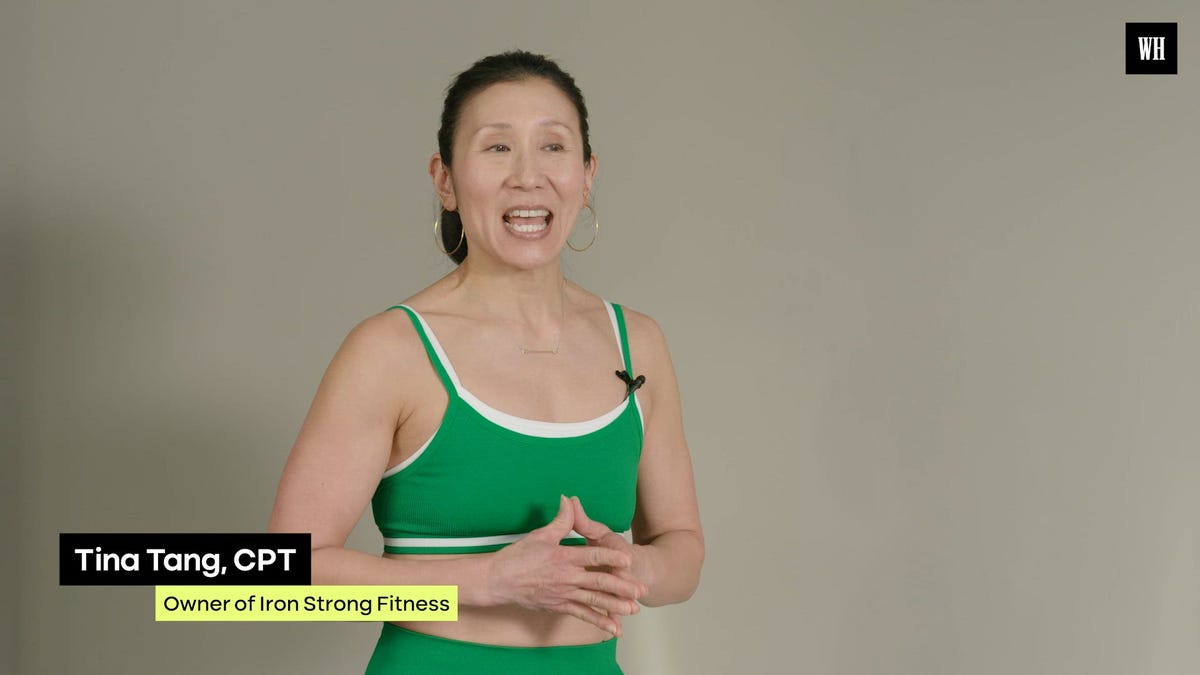There’s something so satisfying (not to mention badass) about a smooth, powerful pull-up—one that feels controlled from start to finish, no jerky movements, no swinging legs, just pure strength. But a perfect pull-up isn’t just about raw strength—it’s about technique and efficiency.
“When done right, a pull-up fires up everything at once,” says Tina Tang, CPT, the trainer behind the WH+ Ultimate Pull-Up Plan. “It’s not just your upper-body doing all the work—it requires full-body engagement.” Proper form means that the lats, upper back, biceps, forearms, core, and even glutes are engaging in one orchestrated motion, ensuring you’re not overloading weaker muscles (like your neck or traps) or compensating with momentum, both of which can lead to strain or plateaus.
Meet your trainer: Tina Tang is a certified personal trainer and the owner of Iron Strong Fitness. She focuses on helping women 40 and over add strength training into their lives. Follow her on Instagram at @ironstrongfit.
“Clean form is what helps you progress safely,” Tang says. “You’ll build strength faster, avoid unnecessary aches, and feel confident every time you approach the bar.” But getting there requires more than muscle.
In this episode of Technique School, Tang breaks down the exact mechanics of an ideal pull-up, step-by-step, so you can move through each portion of the rep with precision.
WATCH NOW: Anatomy Of A Pull-Up
How Proper Form Pays Off Long-Term
Nailing clean form isn’t just about looking cool. It reduces risk of overuse injuries, especially in the shoulders and elbows. Plus, it helps you move more efficiently, meaning more reps, better strength gains, and transferable skills to other lifts.
“Once you master the form, pull-ups feel empowering, not exhausting,” Tang says. “You’ll notice improvements in everything from posture to other upper-body exercises.”
More Pull-Up Tips From Tang
- Use mental imagery. Visualize your body moving as one strong, tight unit.
- Breathe smart. Inhale at the bottom, exhale as you pull.
- Film yourself. Reviewing video can highlight areas to tweak.
- Start slow. One clean rep is better than five sloppy ones.
Talene Appleton is the fitness editor at Women’s Health, where she nerds out over all things fitness, nutrition, and wellness. She was previously the fitness and commerce editor at Men’s Health, where she tested and reported on the newest, buzziest fitness and wellness products to hit the market. As a NASM-certified personal trainer and Precision Nutrition-certified nutrition coach, she is passionate about supporting women at the intersections of fitness, food, and community. Talene was on the George Washington University college dance team (shout out First Ladies) before moving on to become an NBA dancer for the Washington Wizards—you can still catch her at dance classes across New York and LA in her free time. Before entering journalism full-time, Talene was a private chef for four years and still enjoys cooking for and hosting friends and family regularly.
Read the full article here






